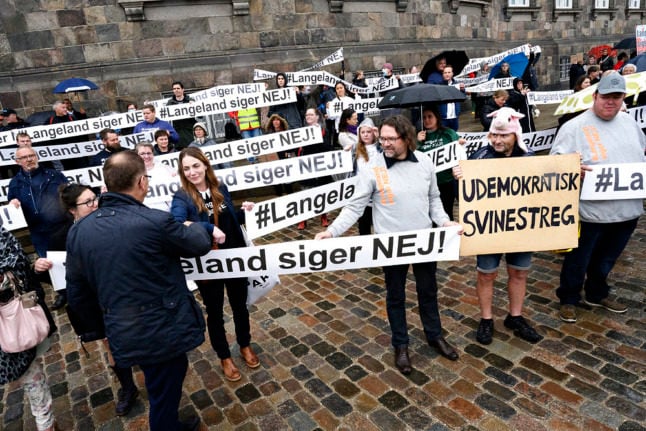A new expulsion centre on the island of Langeland will be used to house people with so-called ‘tolerated stay’ (tålt ophold) status, who do not have permission to reside in Denmark but cannot be deported, and foreign nationals with criminal records whose sentences include deportation.
Plans for the facility were confirmed in a Ministry of Immigration and Integration statement.
The buildings which will be used for the centre on Langeland formerly functioned as an asylum centre and will be called ‘Udrejsecenter Holmegaard’ (Departure Centre Holmegaard).
According to the ministry, the new expulsion centre will be able to house around 130 people and it is expected to be fully operational in the second quarter of 2022.
A so-called udrejsecenter (departure or expulsion centre) can house rejected asylum seekers or others with no legal right to stay but who have not yet left Danish territory, for example due to being stateless or because no readmission arrangement exists between Denmark and their home country.
Others do not agree with the outcome of their asylum application or are unable to be voluntarily returned to their home countries due to the danger they believe that will place them under.
They also accommodate foreign nationals with criminal records whose sentences include deportation.
Expulsion centres are a relatively new type of facility in Denmark. The first centre was established in 2013 at Sjælsmark after the EU passed the Returns Directive in 2008. A second expulsion centre was established at Kærshovedgård in 2016 after an “asylum package” was approved by the government in 2015.
The government said the new expulsion centre will help alleviate feelings of insecurity experienced by neighbours of the departure centre at Kærshovedgård near Central Jutland.
READ ALSO:
- The middle of nowhere: Inside Denmark’s Kærshovedgård deportation camp
- Denmark rejected asylum seekers hunger strike against ‘intolerable’ circumstances
The government has been criticised by conservative parties over delays in announcing a location for a new departure centre.
After the Social Democratic government gained the parliamentary majority with allied left-wing parties in the 2019 general election, it pledged to find a new expulsion centre to replace scrapped plans to open one on the uninhabited island of Lindholm.
Immigration minister Matthias Tesfaye said he is pleased by the news.
“The Social Democrats promised before the election that we would establish a new departure centre for foreigners who have been sentenced to deportation. Foreigners with criminal records sentenced to deportation must be moved away from Kærshovedgård. We are now fulfilling that promise,” Tesfaye said in the statement.
“The local community (near Kærshovedgård) has been affected for a long time and I am happy that we can now relieve them,” he added.
According to the government, it will be much cheaper to establish a centre at Holmegaard instead of Lindholm.
Costs at the centre on Lindholm would have been over one million kroner per resident yearly, more than twice as much as it will cost to have the centre at Holmegaard, the government said in the statement.
Additionally, the Holmegaard location can be turned into an expulsion centre at a cost of approximately 13.5 million kroner, while 210 million kroner was set aside for Lindholm.



 Please whitelist us to continue reading.
Please whitelist us to continue reading.
Member comments